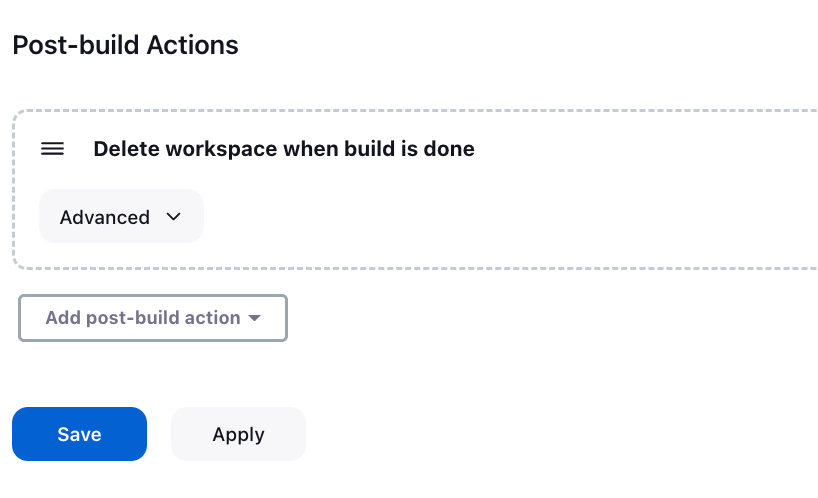If you are familiar with Jenkins, you mainly work with build actions. This build represents a specific set of tasks executed by the Jenkins server. When you create a new build in Jenkins, you can specify a series of actions to be executed as part of the build. These actions might include:
- Compiling source code
- Running tests
- Packaging the code into a deployable artifact (e.g. a jar file)
- Deploying the code to a staging or production environment
Build actions are typically defined as part of a Jenkinsfile, a script specifying the build steps for a particular project. You can define build actions using a variety of plugins and scripts, depending on your needs. Standard tools that are used to define build actions include:
- Shell scripts
- Docker containers
- Groovy scripts
- Ansible playbooks
By defining a set of build actions, you can automate your project’s build, test, and deployment process, making it easier to manage and maintain.
This tutorial will explain what Jenkins post-build actions are and how you can use them.
What are Jenkins Post-Build Actions?
A Jenkins post-build action is a task executed after the build has been completed. Post-build actions are typically used to perform additional processing or reporting on the build results or to trigger other actions based on the build outcome.
Some examples of post-build actions include:
- Sending an email notification with the build results.
- Archiving build artifacts for future reference.
- Triggering a deployment to a staging or production environment.
- Updating a ticketing system with build information.
Just like regular Jenkins build actions, we can define post-build actions in Jenkinsfiles. We They typically specify post-build actions using a plugin or script, depending on the specific task we wish to perform.
Think of post-build actions as a way to extend the functionality of a Jenkins build beyond the tasks defined as part of the build itself.
Defining Jenkins Post Build Actions
As mentioned, we can define post-build actions in a Jenkinsfile. We can also use the Jenkins web interface to do this.
You can follow the instruction as shown:
- Navigate to the Jenkins Dashboard and select the project name you wish to add a post-build action.
- Click on the “Configure” option to configure the job actions.
- Scroll down to the “Post-build Actions” section.
- Click the “Add post-build action” button and select the type of action you want to add from the dropdown menu.
- Configure the settings for the post-build action as needed. The specific settings will depend on the type of action you are adding.
- Click the “Save” button to save your changes.
For example, the screenshot below shows how to add a simple echo message as a post-build action.
Remember that depending on your Jenkins version and the configuration, this option may need to be added in pipeline job types.
Defining A Jenkins Post-Build Action using Pipeline Syntax
We can also add a post-build action using a Jenkins pipeline, as shown in the syntax below:
agent any
stages {
stage('Build') {
steps {
// build steps go here
}
}
}
post {
// post-build actions defined here
}
}
You can define any supported Jenkins action, including sending emails, creating files, sending logs, and more.
Conclusion
In this article, you learned what Jenkins’s post-build actions entail and the two primary methods you can use to define post-build actions in Jenkins.

